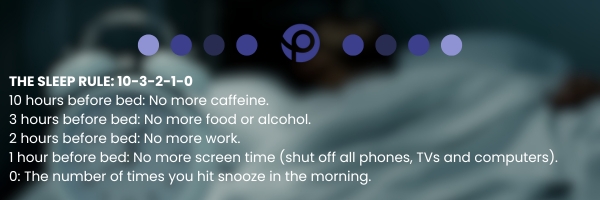Unlock the secret to optimal sleep by embracing proven sleep hygiene practices.
Follow our expert tips for sleeping like a pro and seize the opportunity to transform your sleep quality.
Optimize bedding:
Invest in a high-quality mattress and pillows that support your preferred sleeping position and provide comfort. The right bedding can prevent back pain and discomfort that might
disturb your sleep. Choose breathable, natural fiber linens to maintain a comfortable body temperature throughout the night.
Control the ambient environment:
Temperature: Maintain a cool room, ideally around 20-22 degrees , as cooler temperatures help lower your body temperature and signal your body it’s time to sleep.
Noise:
Minimize noise pollution by using white noise machines or earplugs. Consistent, low-level sound can mask disruptive noises like traffic or loud neighbours.
Light:
Use blackout curtains or shades to block out light, especially if you live in an area with substantial nighttime light pollution. Darkness is crucial for signaling your body to produce
melatonin, the sleep hormone.
Aromatherapy:
Consider using soothing scents like lavender or chamomile, which have been shown to have a calming effect, reduce stress, and improve sleep quality. Essential oil diffusers or
scented candles can help incorporate these scents into your bedtime routine.
Mindfulness Meditation:
Practicing mindfulness meditation before bed can help calm your mind and ease you into sleep. Focus on deep breathing and letting go of the day’s stresses, allowing your mind to transition peacefully to sleep.
Progressive Muscle Relaxation:
This technique involves tensing and then relaxing different muscle groups in your body. It helps reduce physical tension and mental stress, making it easier to fall asleep. check it out
here.
Guided Imagery:
Use guided imagery exercises to steer your thoughts away from the day’s worries towards peaceful, calming images. This method can be particularly effective if anxiety or
overthinking disrupts your sleep.
Implementing these techniques can transform your bedroom into a sanctuary that nurtures deep, restorative sleep. Tailor these strategies to fit your preferences and watch as your sleep quality begins to improve.
SLEEP HYGIENE FOR SPECIFIC GROUPS: Different age groups and lifestyles require tailored approaches to sleep hygiene to address their unique challenges and needs. Here we discuss specific recommendations for teens, adults, and the elderly, each of whom may face distinct obstacles in achieving restful sleep.

Teens often experience a shift in their internal clocks that predisposes them to prefer later bedtimes and later waking times. This shift can conflict with early school start times, leading to a chronic state of sleep deprivation.
Set Realistic Bedtimes
Encourage teens to go to bed at a time that is practical yet allows for 8-10 hours of sleep before they need to wake up.
Limit Evening Caffeine
Discourage consumption of caffeinated beverages late in the day to avoid interference with falling asleep.
Create Tech-free Zones
Implement rules that limit the use of technology in the bedroom, such as no screens an hour before bed, to help teens wind down.
Encourage Physical Activity
Promote regular exercise during the day, which can help advance sleep times and increase sleep duration and quality.
Adults often juggle multiple responsibilities that can encroach on sleep time, such as work, parenting, or social commitments. Stress management and setting boundaries around work and leisure activities can significantly improve sleep hygiene.
Establish A Wind-down Routine.
Develop a pre-sleep ritual that might include reading, light stretching, or other relaxing activities to signal to the body it’s time to wind down.
Manage Work-Life Balance.
Avoid bringing work-related materials into the bedroom and try to complete work tasks at least an hour before bedtime.
Evaluate Your Sleep Environment.
Regularly assess the bedroom for optimal sleep conditions—adjusting light, noise, and temperature as needed.
Older adults often deal with changes in sleep architecture, including lighter sleep and more frequent awakenings. Health conditions and medications can also affect sleep patterns.
Address Health Concerns.
Consult healthcare providers to manage conditions or medications that may interfere with sleep. If you have regular disruptive sleep, reach out to a healthcare provider.
Maintain Social & Physical Activities.
Engage in social activities and light exercise, such as walking, to promote better sleep.
Nap Wisely.
Nap only if necessary, limit naps to early afternoon and keep them under 20 minutes to avoid disrupting nighttime sleep. We suggestion not taking any naps after 2pm in the afternoon.
Improving sleep hygiene is an ongoing process that involves assessing current habits, making targeted changes, and evaluating the effects of those changes. Here, we outline a step-by-step approach to help individuals develop and maintain good sleep hygiene habits over time.
Evaluate your current sleep habits:
Begin by documenting your sleep times, duration, and quality in a sleep diary for at least two weeks. This record can reveal patterns and areas for improvement.
Set clear sleep goals:
Based on your diary and identified issues, set realistic and specific goals. For example, if you take over 30 minutes to fall asleep, your goal could be to reduce this time by adjusting
your pre-sleep routine.
Implement changes gradually:
Introduce changes one at a time to avoid overwhelm and to clearly see what impacts each alteration has on your sleep. Start with easier changes, like adjusting the lighting in your
bedroom or establishing a fixed bedtime.
Regularly assess changes
Every few weeks, review your sleep diary and note any changes in sleep onset, quality, and duration. This assessment helps you understand whether the changes you’ve implemented are effective.
Be flexible in your approach
If a particular strategy does not improve your sleep or feels unsustainable, be willing to adjust it. Sleep needs can change due to lifestyle shifts, aging, or health changes, so flexibility is crucial.
Seek professional help if necessary
If sleep problems persist despite your efforts, consider consulting a sleep specialist. There might be underlying issues such as sleep apnea, insomnia, or restless legs syndrome that require professional intervention.
